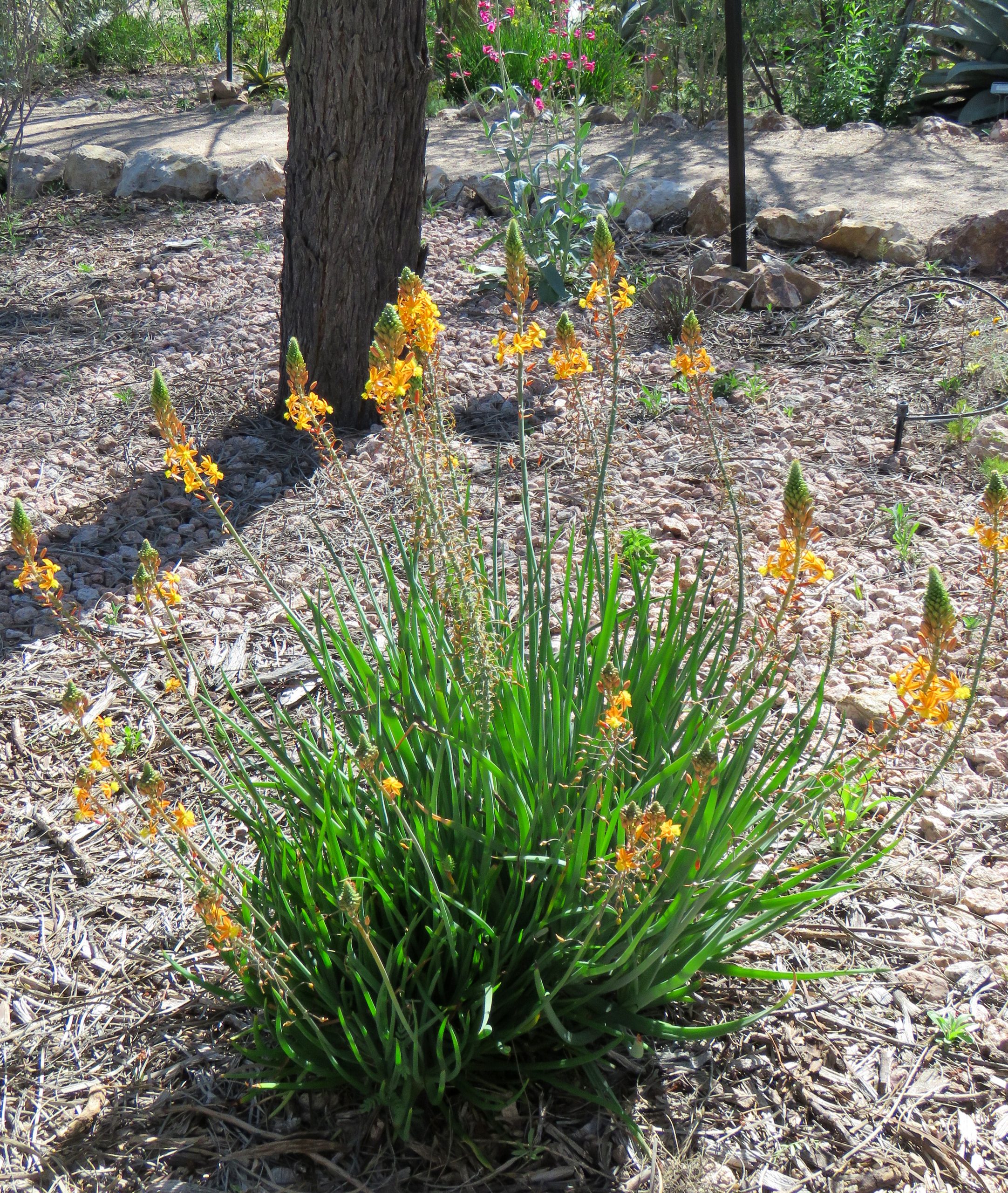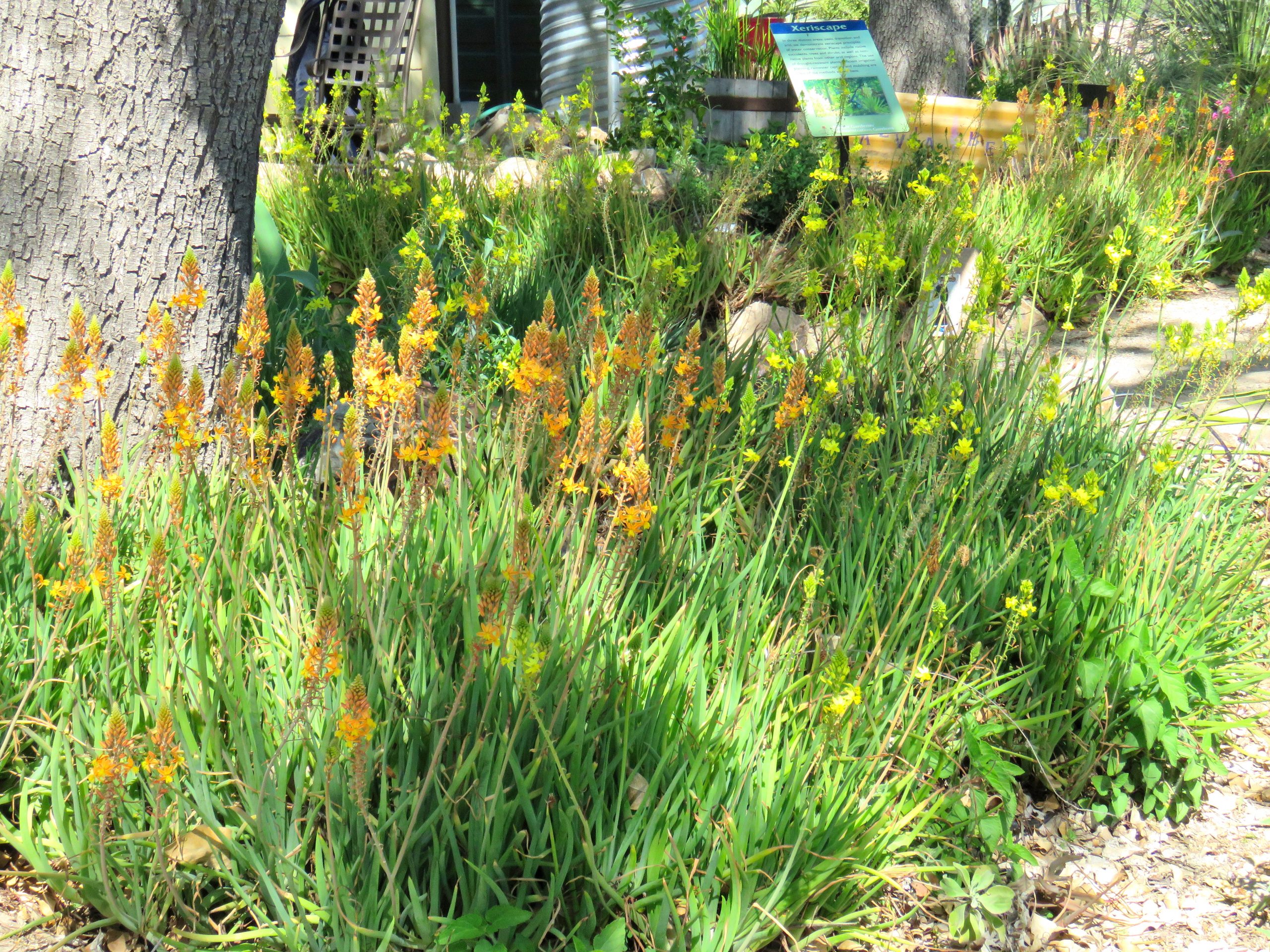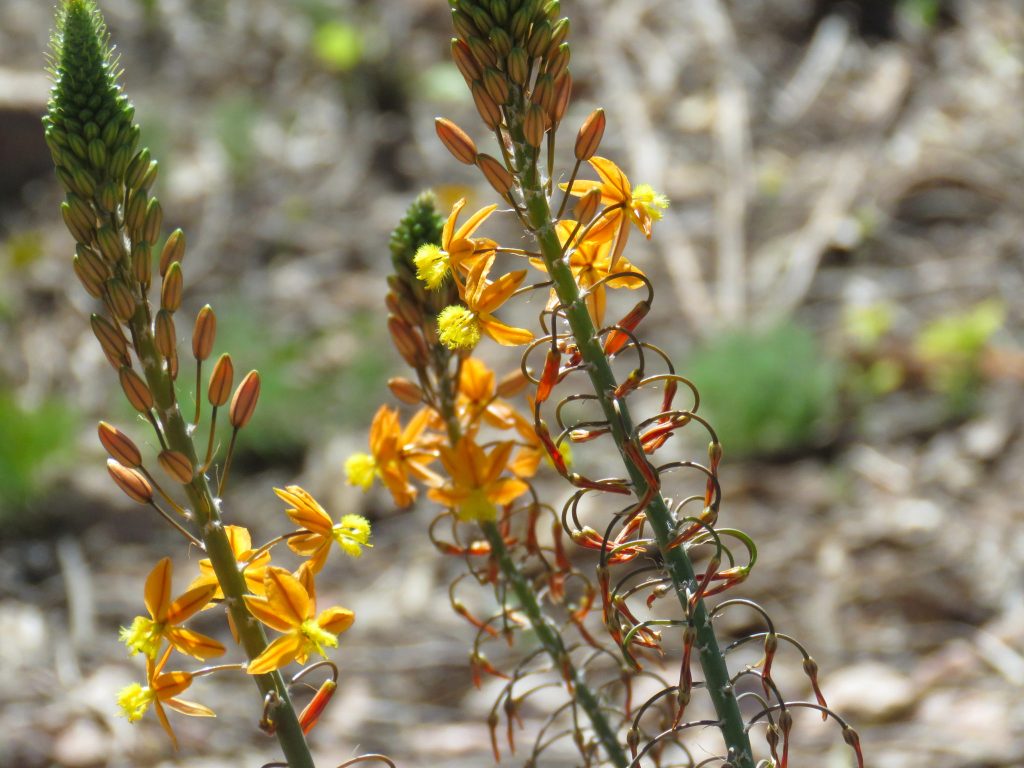If you’re looking for delicate winter color in small spaces, consider shrubby bulbine.
FIELD NOTES
Once upon a time in the Groot Swartberg Mountains in South Africa, while photographing an intriguing bulb called Boophone disticha on a dry, rocky slope, we happened upon a lonely, flowering Bulbine frutescens. The species is native to dry areas throughout South Africa from near sea level to 3,000 feet elevation (editors note: very similar to our Arizona desert climate).
DESCRIPTION/FORM
This low, wide-spreading, shrubby plant has thick fleshy leaves. The mass of leaves and stems form clumps to about 2 feet tall and 3 to 4 feet across. In late winter and spring, 12- to 18-inch-long flower spikes decorate the plants. Yellow flowers top the most common type, while the cultivars, ‘Hallmark’ and ‘Tiny Tangerine’ sport two-tone orange-and-yellow flowers.

CULTURE/MAINTENANCE
Plants are hardy to about the low teens Fahrenheit – although there may be some leaf damage in an extended hard frost. New leaves quickly replace damaged foliage in the spring. Succulent leaves equip B. frutescens to withstand long periods of drought. They are fast-growing and fill out quickly, especially in soil with good drainage. Prune only occasionally when stems get top-heavy.
IDENTIFICATION
The common form has solid yellow flowers. More compact cultivars ‘Hallmark’ and ‘Tiny Tangerine’ have orange petals instead of the usual yellow.
LANDSCAPE APPLICATION
Use shrubby bulbine for the seasonal color in full or reflected sun. It combines naturally with other succulents in a cactus garden or a rock garden. It dresses up pool areas, raised planters, or tight planting spaces along sidewalks or entryways, as well as open slopes. Southwestern native trees such as Acacia, Parkinsonia, and Prosopis species are comfortable mixing with this South African bulb, as are perennials and shrublets from the region such as Conoclinium dissectum (mist flower), Dalea capitata, Justicia candicans (red justicia), Hibiscus coulteri (desert rosemallow), Wedelia acapulcensis var. hispida (zexmenia), and Zauschneria californica (hummingbird trumpet). Note, this plant also grows well in containers.
PRECAUTIONS
Be careful not to overwater, especially in fall or winter.

~ ~ ~ ~ ~ ~ ~ ~ ~ ~ ~ ~ ~ ~ ~ ~ ~ ~ ~ ~ ~ ~ ~ ~ ~ ~
Did you know that up to 70 percent of water use is outdoors? That’s why we love desert plants and feature them each month. It’s still a great time to plant non-tropical plants in your landscape, and you can learn more about Bulbine and other plants on our Arizona Low-Water-Use Plants page. Visit our page on Choosing and Planting Low Water-Use Plants for tips on plant selection and how to plant properly. Also, be sure to read through all of our featured Plant of the Month blogs!
Water – Use It Wisely is proud to feature guest bloggers who write about topics related to water and water conservation. Greg Starr is a horticulturist and the owner/manager of Starr Nursery located in Tucson, AZ. It is a mail order nursery where you can shop online. Greg has traveled extensively in Mexico and the southwestern United States to study native plants for their potential landscape use in desert regions of the world. In 2009, Greg entered the world of literature as an author with the publication Cool Plants for Hot Gardens (currently sold out but under revision for a new and improved second edition). In 2012 he published his second book, Agaves: Living Sculptures for Landscape and Containers.


